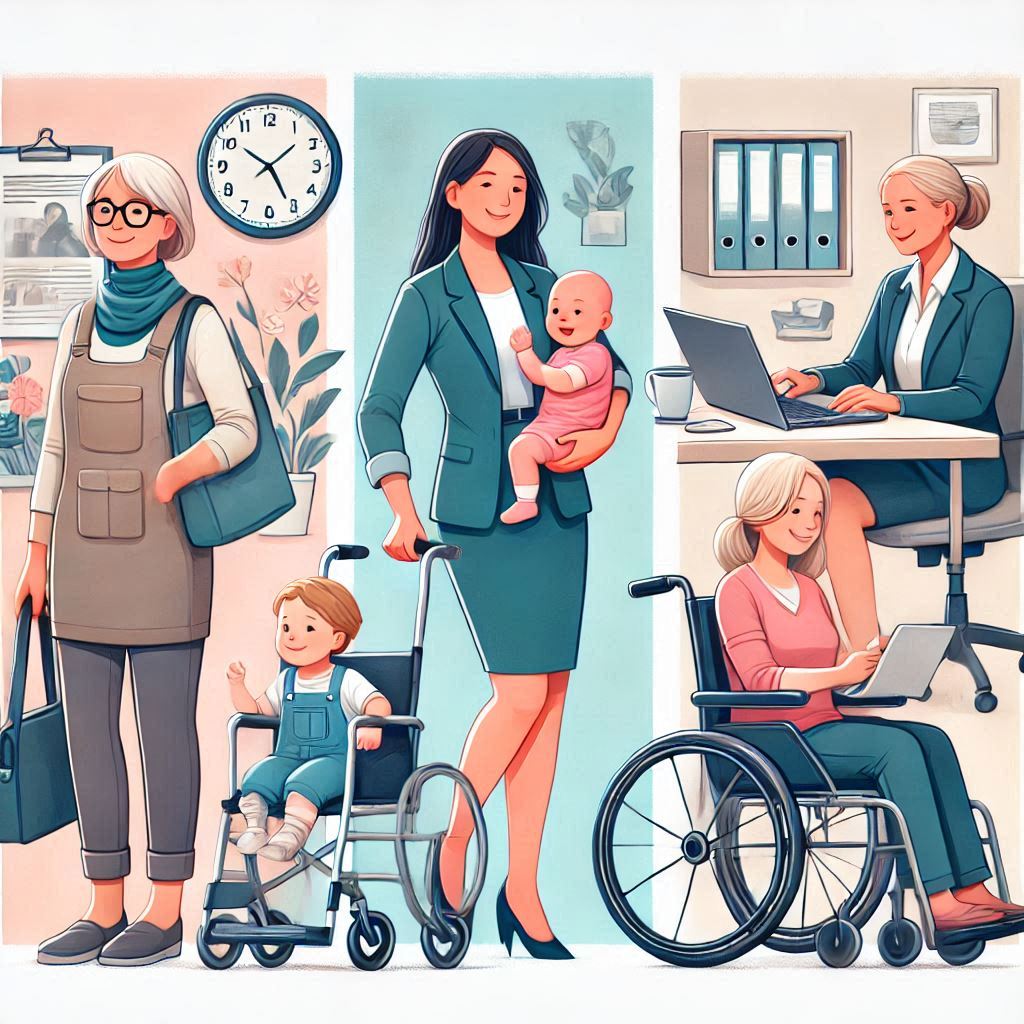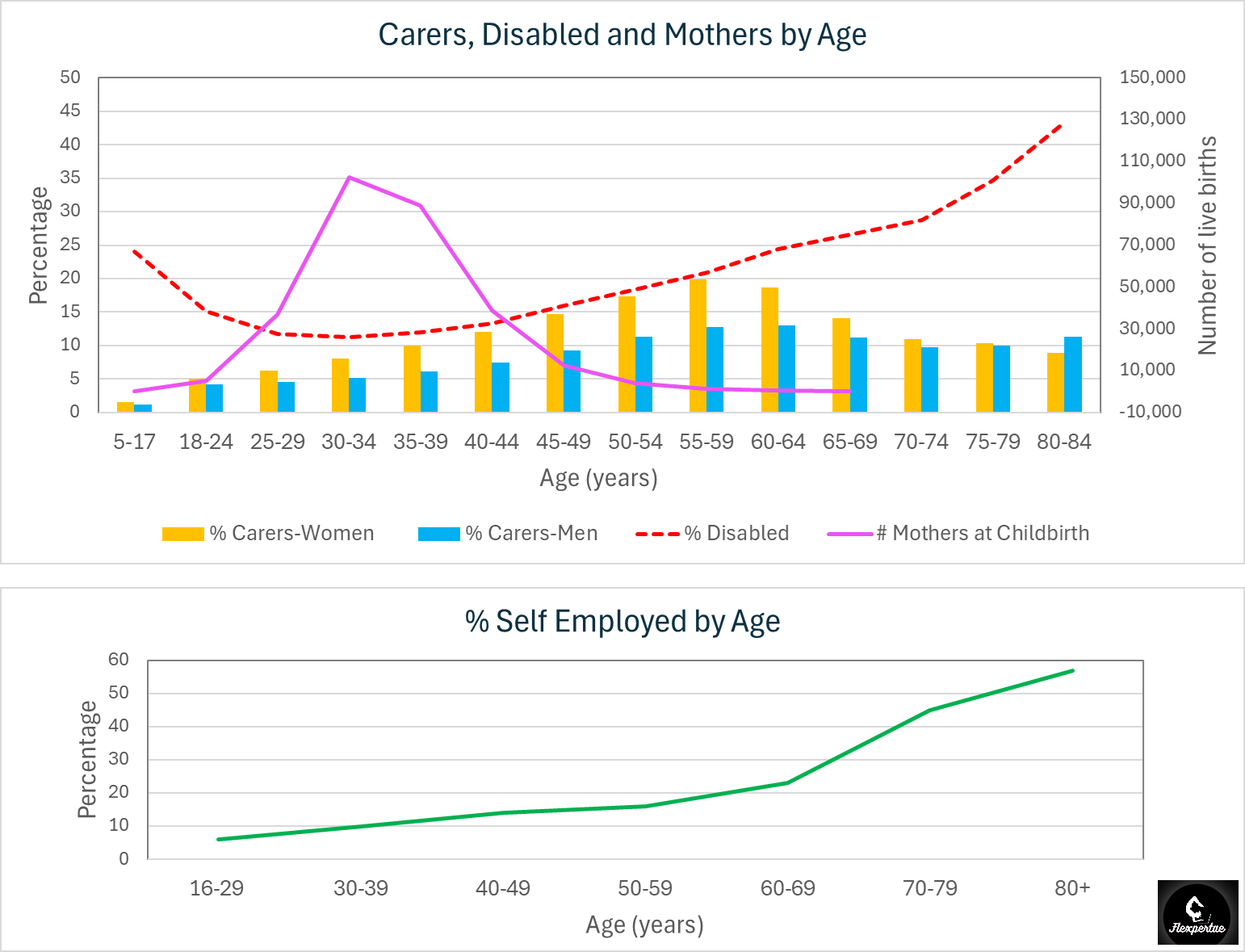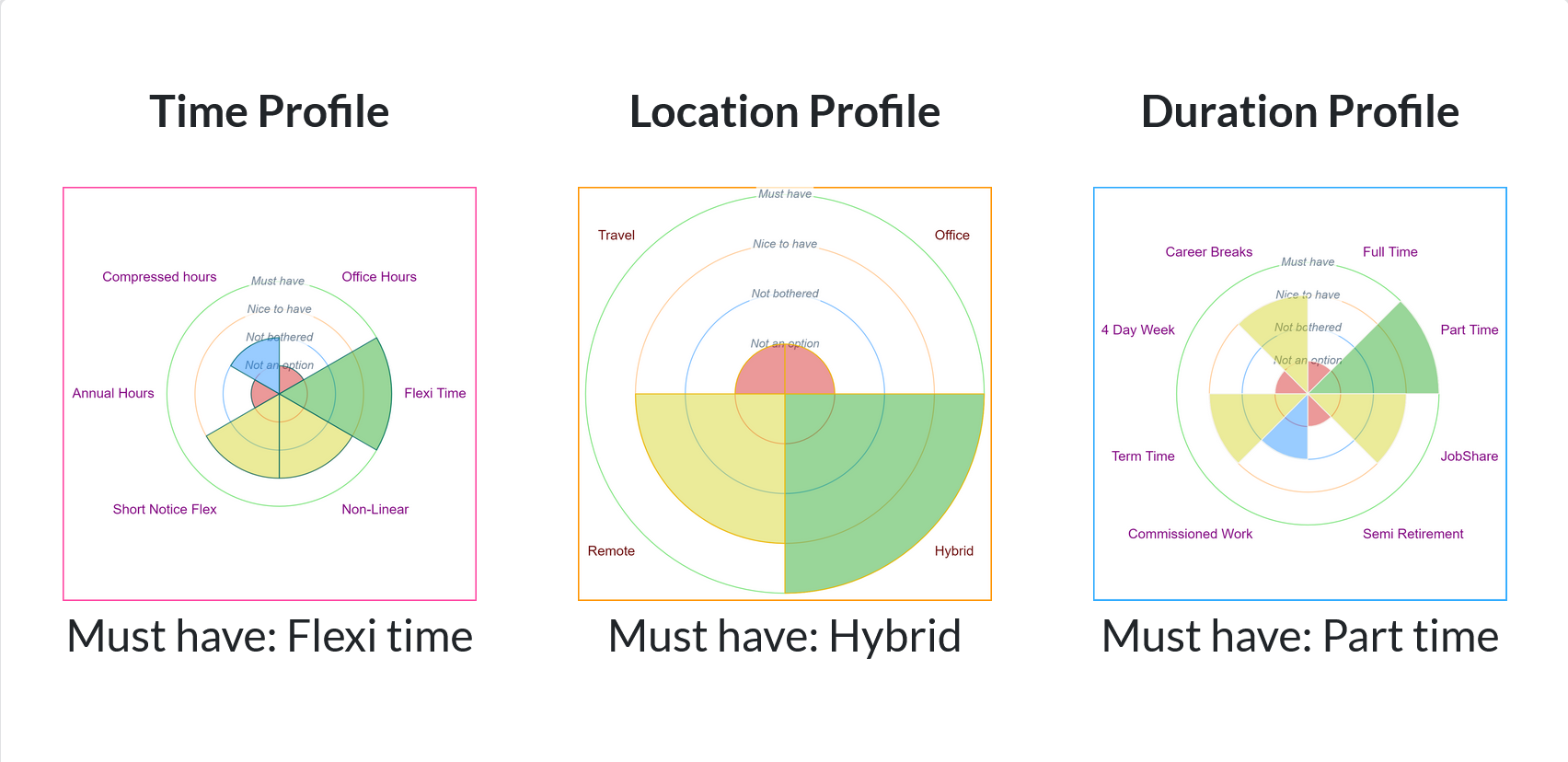
Life Stages, Work Changes: How Life’s Stages Shape Our Careers
The narrative around flexible working often assumes it to be a single, all-encompassing solution; a one-size-fits-all approach that should seamlessly suit every worker, regardless of their stage of life. This perspective is not only naive but also unrealistic. Life phases are dynamic and diverse, each with its own unique challenges and demands - whether it’s parenting, caregiving, managing health, or transitioning into retirement. Expecting these varied life stages to morph into one uniform "work phase" ignores the complexity of individual needs and the evolving nature of personal circumstances.
Instead, flexible working is an opportunity to adapt and meet the changing demands of our lives. Whether it’s parenting, caring for loved ones, managing health conditions, achieving work-life balance, or accommodating disabilities, the need for flexibility shifts as we move through different phases of life.
Interestingly, while work-life balance often dominates the conversation around flexible working, it’s the only reason that could be considered a “nice to have.” For the other reasons - parenting, caregiving, health, and disabilities - flexibility becomes a necessity. It enables individuals to stay in or re-enter the workforce and allows employers to retain and attract experienced talent.
To better understand these dynamics, the graphs below illustrate key trends across the working-age population, including data on motherhood, caregiving, disabilities, and self-employment by age.

Bottom graph: Self-employment by age
Key Observations
- Motherhood : The peak age for becoming a mother is between 30 and 40 years.
- Caregiving : Caregiving responsibilities increase significantly from age 30 and peak between 55 and 59 years. Women are disproportionately affected by caregiving demands compared to men.
- Disabilities : While the percentage of disabled individuals is higher in younger age groups in 2021 compared to previous decades, the overall trend shows that disabilities rise with age, affecting over 25% of people by retirement age.
- Self-Employment : Self-employment increases steadily with age, with a notable jump at retirement age and beyond.
The Impact on Women’s Careers
The data reveals two distinct phases in women’s working lives where flexibility becomes critical: during motherhood (peaking at 30-40 years) and later during caregiving (peaking at 55-59 years). These overlapping demands often force women to make difficult choices. For example, prior to motherhood the vast majority of women work full-time yet 85% of new mothers leave full-time work within three years of giving birth, often transitioning to part-time roles, nudged into lower-paid and lower-skilled jobs, or leaving the workforce entirely.Similarly, caregiving responsibilities take a toll on both men and women, with 600 people in the UK leaving their jobs daily to care for loved ones. This highlights the urgent need for flexible working options to support caregivers.
The Broader Picture: Disabilities and Aging Workers
With 20% of the working-age population living with disabilities and a 1 in 4 chance of becoming disabled before retirement, flexibility is no longer a luxury - it’s a necessity.Additionally, as the workforce ages (there are now more workers over 50 than under 30), employers must adapt to retain experienced talent. Flexible retirement options, such as reduced hours or transitional roles, can help older workers ease into retirement while sharing their expertise.
Indeed, the data on self employment shows the desire to work remains past retirement age for many presenting an opportunity for smart employers to levarage their experience and wisdom.
Entrepreneurship: A Gendered Perspective
The peak age for entrepreneurship is 40 years for men and 39 for women. While this overlap in age might suggest similar motivations, the underlying reasons often differ significantly between genders.Studies consistently show that men are more likely to cite career progression, financial gain, and independence as key drivers for starting their own businesses. By their late 30s and early 40s, many men have built the skills, networks, and confidence needed to start their own ventures, often viewing entrepreneurship as a natural progression in their careers.
For women, however, the story is more complex. The peak age for women entrepreneurs coincides with the age range during which most women become mothers (30-40 years). This correlation is not coincidental. Research suggests that women often turn to entrepreneurship out of necessity, driven by frustration with inflexible work systems, limited opportunities for advancement, and a lack of support for balancing work with parenting and caregiving responsibilities. In fact, 85% of new mothers leave full-time employment within three years of giving birth, many of whom seek alternative career paths that offer greater flexibility and autonomy.
A 2019 report by the Global Entrepreneurship Monitor (GEM) found that men are more likely to start businesses out of opportunity, while women are more likely to do so out of necessity supporting the theory that women often turn to entrepreneurship as a response to systemic challenges, such as a lack of flexible working options or support for caregiving responsibilities.
This divergence in motivations highlights a critical issue: while men often pursue entrepreneurship as a choice, women are frequently pushed into it due to systemic barriers in traditional employment. For mothers and caregivers, entrepreneurship can become a lifeline - a way to maintain financial independence while accommodating the demands of family life. However, it also underscores the need for workplaces to provide better support for flexible working, which could reduce the pressure on women to leave traditional employment in the first place.
The Many Faces of Flexible Working
The current debate around flexible work often focuses on remote versus in-office arrangements. However, flexibility comes in many forms, each suited to different needs:- Working Mothers : May seek non-linear hours, a four-day work week, or part-time roles.
- Caregivers : Often require remote/hybrid work, flexi-time, or part-time schedules.
- People with Disabilities : Might need remote work or reduced travel.
- Older Workers : May prefer semi-retirement, reduced hours, or mentorship roles.
For some, these needs are temporary (e.g., working mothers), while for others, they are long-term (e.g., individuals with disabilities). Recognizing this diversity is key to creating inclusive workplaces.
Why This Matters
Flexible working is not just a perk offering balance - it’s a critical tool for supporting diverse demographics at various stages of their careers. By offering tailored flexibility, employers can retain talent, boost productivity, and foster a more inclusive workforce.This is why MapMyFlex was created: to visually map and communicate the multi-layered flexible working needs of employees. It’s a step toward building a future of work that embraces flexibility as a strength, not a compromise.

Data from ONS (UK) and Centre for Ageing Better infographics.
Blog article by: Zahida Posted: March 2025